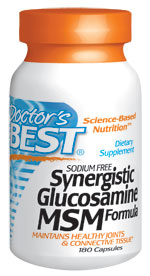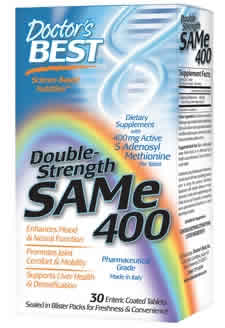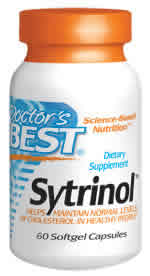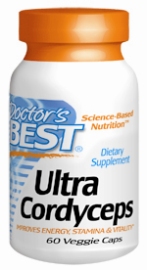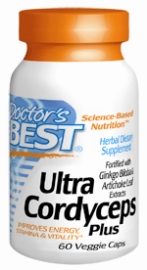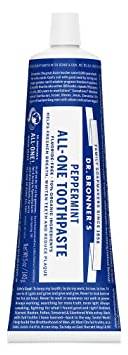- *MSRP:
$19.99- Our Price:
- $17.80
- Buy: at $17.80
- UPC: 753950000704
- # DRB-00070
Synergistic Glucosamine/MSM Formulasupplement facts:
serving size 2 capsules Vitamin C (ascorbic acid)...........................100mg Potassium (from glucosamine sulfate KCl)............61mg chloride (from glucosamine sulfate KCl).............56mg
Glucosamine sulfate KCl ............................500mg
MSM (LIGNISUL)......................................1000mg other ingredients: cellulose, magnesium stearate, gelatin capsule. suggested use: as a dietary supplement, take 2 capsules three times daily, with or without food. Contains nothing other than listed ingredients. Synergistic Glucosamine/MSM Formula contains pure, sodium-free, potassium-stabilized glucosamine sulfate, as confirmed by HPLC testing. Note: Glucosamine sulfate is derived from the shells of ocean-growing shellfish. It is processed to remove all residues of protein and impurities, yielding pure glucosamine sulfate as the final material. Synergistic Glucosamine/MSM Formula contains pure LIGNISUL™ MSM (methylsulfonylmethane). LIGNISUL™ MSM is natural-source MSM derived from trees. A biological compound that occurs in the human body and in some foods, MSM is an excellent dietary source of bioavailable organic sulfur. Synergistic Glucosamine/MSM Formula contains pure, corn-free ascorbic acid. Glucosamine sulfate supports joint function by supplying the body with dietary ingredients (glucosamine and sulfur) for building joint cartilage.* Glucosamine, an amino sugar normally manufactured in cartilage, stimulates the production of cartilage components known as “glycosaminoglycans.”1 These substances are essential to the maintenance of sound joint structure, which in turn allows for normal joint function. MSM, organic sulfur is a structural mineral that maintains the strength of various tissues by forming sulfur “tie-bars” (sulfhydryl bonds) between connective tissue proteins. MSM supplies the body with nature’s original source of organic bioavailable sulfur. Vitamin C is essential for the formation of collagen, the protein fiber that gives cartilage its structural strength.* Why is potassium-stabilized glucosamine sulfate preferable? In order for glucosamine sulfate to be processed for oral intake as a supplement, it must be stabilized with either sodium or potassium. Either mineral works for this purpose. Potassium is preferable. Many people are on sodium-restricted diets, and the Standard American Diet tends to be high in sodium and low in potassium. What’s more, studies have found that people needing joint support are low in both salivary potassium and total body potassium.2,3,4 Glucosamine Sulfate: A solid foundation of clinical evidence Glucosamine sulfate has been thoroughly researched over the last 20 years. Double-blind and open clinical trials convincingly demonstrate that oral glucosamine sulfate improves joint function.5,6 In one large open trial, more than 1,200 people took oral glucosamine sulfate for periods ranging from 36 to 64 days. 252 physicians participated in this multi-center study. 95% of the subjects experienced greater joint comfort and increased mobility. The physicians reported “good” results in 59%, and “sufficient” results in 36%. The improvements lasted for up to three months after the glucosamine sulfate was discontinued.6 Why the human body needs MSM The human body requires a continuous supply of bioavailable sulfur, and MSM is one of the primary, organic, sulfur-containing molecules for use by living organisms. MSM occurs normally in tissues and body fluids. Scientists who have studied MSM in detail believe MSM is an absolute requirement for maintenance of healthy tissues and organ functions.7,8 The research on MSM has led to the filing of several patents that cover numerous uses of MSM as a dietary ingredient for both humans and animals.7 Through these studies, it has been found that physical and psychological stress increases in the body when its MSM supply falls below minimum levels, resulting in a loss of normal organ function.7,8 MSM supports joint and organ function by donating sulfur for formation of sulfur tie-bars that maintain the integrity of cartilage and other tissues.* Based on clinical observations, MSM benefits the body in many ways, which include maintenance of healthy skin, hair, and nails, digestive system support, and immune support.* MSM is as nontoxic to the body as water, and is therefore completely safe, even at high dosage levels.7 Supplementation is Needed to Realize the Benefits of MSM Widespread in nature, MSM is found in a variety of foods, including fresh fruits and vegetables, raw milk, raw meat and raw fish.7,8 However, MSM is a volatile substance easily lost during cooking, pasteurization, food processing and storage. The average American diet thus supplies at best a marginal MSM intake, which may be inadequate to maintain the optimum MSM concentration in the body. The body’s MSM concentration is also believed to decline with increasing age.8 Safety Suggested Adult Use: Two capsules, 3 times daily. Does Not Contain: milk, egg, wheat, corn, sugar, sweeteners, starch, salt, or preservatives. Scientific References 1. Vidal y Plana, R.R., Bizzarri, D., Rovati, A.L., “Articular cartilage pharmacology: I. In vitro studies on glucosamine and non-steroidal anti-inflammatory drugs.” Pharmacological Research Communications 1978; 10(6):557-569. 2. Siamopoulou, A. et. al. “Sialochemistry in juvenile chronic arthritis.” British Journal of Rheumatology 1989;28(5):383-5. 3. Syrjanen, S. et. al. “Salivary and serum levels of electrolytes and immunomarkers in edentulous healthy subjects and in those with rheumatoid arthritis.” Clinical Rheumatology 1986;5(1):49-55. 4. Sambrook, P.N., et. al. “Bone turnover in early rheumatoid arthritis.” 1. Biochemical and kinetic indexes. Annals of the Rheumatic Diseases 1985;44(9):575-9. 5. Macario , J. T., Rivera, I.C., Bignamini, A.A., “Oral glucosamine sulfate in the management of arthrosis: report on a multi-centre open investigation in Portugal.” Pharmatherapeutica 1982; 3(3):157-68. 6. Vaz, A.L., “Double-blind clinical evaluation of the relative efficacy of ibuprofen and glucosamine sulfate in the management of osteoarthrosis of the knee in out-patients.” Current Medical Research and Opinion 1982; 8(3):145-149. 7. Herschler, R. “Methylsulfonylmethane in dietary products.” United States Patent 4,616,039; Oct. 7, 1986. 8. Jacob, S., Herschler, R. “Introductory remarks: dimethyl sulfoxide after 20 years.” Annals of the New York Academy of Sciences 1983; 411:xiii-xvii. 9. Hardingham, T. “Proteoglycans: Their structure, interactions and molecular organization in cartilage.” Biochemical Society Transactions 1981;9(6):489-97. 10. Bland, J. H., Cooper, S.M. “Osteoarthritis: A review of the cell biology involved and evidence for reversibility. Management rationally related to known genesis and pathophysiology.” Seminars in Arthritis and Rheumatism 1984;14(2):106-133.
|
Helpful Customer Reviews
Supplemental Information

